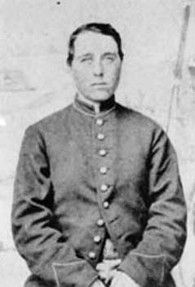 For three years and two weeks, Albert Cashier fought hard and long. Comrades were killed and the horrors of the American Civil War played out.
For three years and two weeks, Albert Cashier fought hard and long. Comrades were killed and the horrors of the American Civil War played out.
He was one of the lucky ones, who made it home again. It was not without injury, nor had he missed out on the dreaded (and often fatal) surgeon's table. He'd received a bullet in his hand; and undergone treatment for an intestinal infection.
Back in Belvedore, Illinois, he was greeted as a hero with cheers in the streets and settled down to nurse his memories and his wounds. He never married. He was seen as a bit of a recluse. He found work as a gardener, and later as a mechanic in a garage, but he kept himself to himself.
War can do that to a person.
It wasn't until 1911, fifty years after the Civil War, that an accident nearly exposed his big lie. A car, driven recklessly into the garage, mowed Albert down before it. He screamed out his protest at being conveyed to the doctor. Those witnessing it assumed that it was a post-traumatic reaction to being in the civil war hospital tents.
The doctor found out the truth. Albert Cashier was a woman. She'd been born Jenny Hodges in Belfast, but there was little hope for a 17 year old Irish girl on her own in the USA. She'd put on clothes belonging to her step-father and made her way in the world as a boy.
Astounded that their honored Civil War veteran and hero was actually female, the doctor didn't quite know what to do. Jenny begged his secrecy and, to his credit, he agreed.
Yet this turned out to merely be borrowed time. Now sixty-seven years old and frail with it, Jenny couldn't cope well with her broken leg and other injuries. Deteriorating fast, she was consigned to a care home for war veterans, where a second doctor gave her an entrance examination.
He was not prepared to cover up for her. He was utterly outraged! It went against all of his moral standards to know that a woman, even one who had fought so bravely, was masquerading as a man. She had even voted in elections!
His views were shared by all the care home staff and she was committed instead to a lunatic asylum. Jenny was forced to wear dresses for the first time since her teens; and she was treated with the porcelain disdain of all her sex. Yet she did not go down without a fight, demanding an investigation to prove her sanity.
Former comrades, including her commanding officer, stepped forward as witnesses. They testified to her bravery and heroics during the war. Even so, it was to no avail. The very fact of having lived out fifty years of her life as a man was enough to have Jenny Hodges labelled insane.
She died just two years later, feeling that her final legacy was disgrace.
But there was a coda from her unit. Even with the truth exposed and her mental state officially tarnished, they saw her as one of their own. She was afforded full military honors at her funeral and buried beneath a soldier's headstone, as Albert Cashier, 95th Illinois Infantry. War hero.



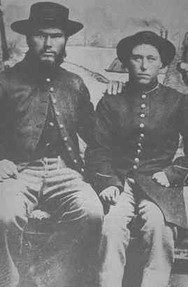 It was a story being repeated all over America during the 1860s.
It was a story being repeated all over America during the 1860s. 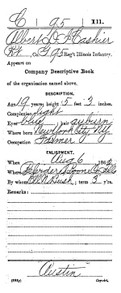
 For three years and two weeks, Albert Cashier fought hard and long. Comrades were killed and the horrors of the American Civil War played out.
For three years and two weeks, Albert Cashier fought hard and long. Comrades were killed and the horrors of the American Civil War played out. 










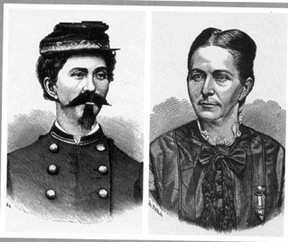 There is no single answer to what prompted women to join the Confederate and Union armies.
There is no single answer to what prompted women to join the Confederate and Union armies. 

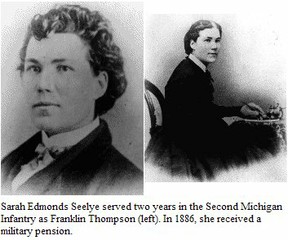 Some soldiers, like Catherine Davidson of the 28th Ohio Infantry, suffered amputations. In her case, she lost her arm from below the midpoint between elbow and shoulder. An unnamed Confederate woman lost her leg at Allatoona.
Some soldiers, like Catherine Davidson of the 28th Ohio Infantry, suffered amputations. In her case, she lost her arm from below the midpoint between elbow and shoulder. An unnamed Confederate woman lost her leg at Allatoona.




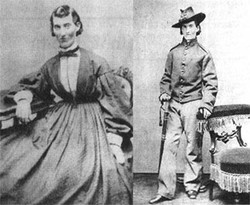

 St Tydecho's Churches in West Waleson 09/03/2014
St Tydecho's Churches in West Waleson 09/03/2014
 Goodies for an Outlander Premiere Partyon 03/06/2015
Goodies for an Outlander Premiere Partyon 03/06/2015
 Holocaust Memorial Day Interview with Rainer Höss, Grandson of Rudolf Architect of Auschwitzon 01/24/2015
Holocaust Memorial Day Interview with Rainer Höss, Grandson of Rudolf Architect of Auschwitzon 01/24/2015
 Romantic Valentine Gifts for an Outlander Fanon 01/16/2015
Romantic Valentine Gifts for an Outlander Fanon 01/16/2015


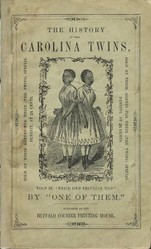
Comments
Thank you very much, Sheri!
Fascinating history lesson. WOW! Pinning it.
Thank you!
And in those circumstances, the female angle should be even more important! Ok, these things shouldn't be allowed to skew the reality - there were far, far more men fighting in the American Civil War. The females made up a miniscule number in comparison. But they should have been mentioned.
I attended an all-girl academy for my high school years. 100% of the class was female. :) Sorry. I have to get used to the Wizzley site. I sometimes forget to click the Thumbs Up button. Clicked it!
Thank you very much. I realise that school history classes can't cover everything, but this is a sad omission, when presumably half the class were female.
I've studied American history. It's a required part of the U.S. school curriculum. But I never learned about these women. Sharing.
I'm glad that you liked it. They were amazing women, weren't they?
What a great resource for Civil War historians.
I'm doing my bit to make it so! And yes! I'd pay to see that movie. I wonder if it would pass the Bechdel Test?
Another really great wizz, Jo! Packed with very interesting stuff as always. I think the subject of women in the civil war would make an excellent movie (or novel) - why is this not more widely known?